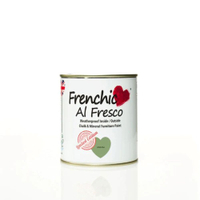How to paint a front door without removing it – the easy way to refresh your home's entrance
Add a fresh coat of paint to your front door with this hassle-free method
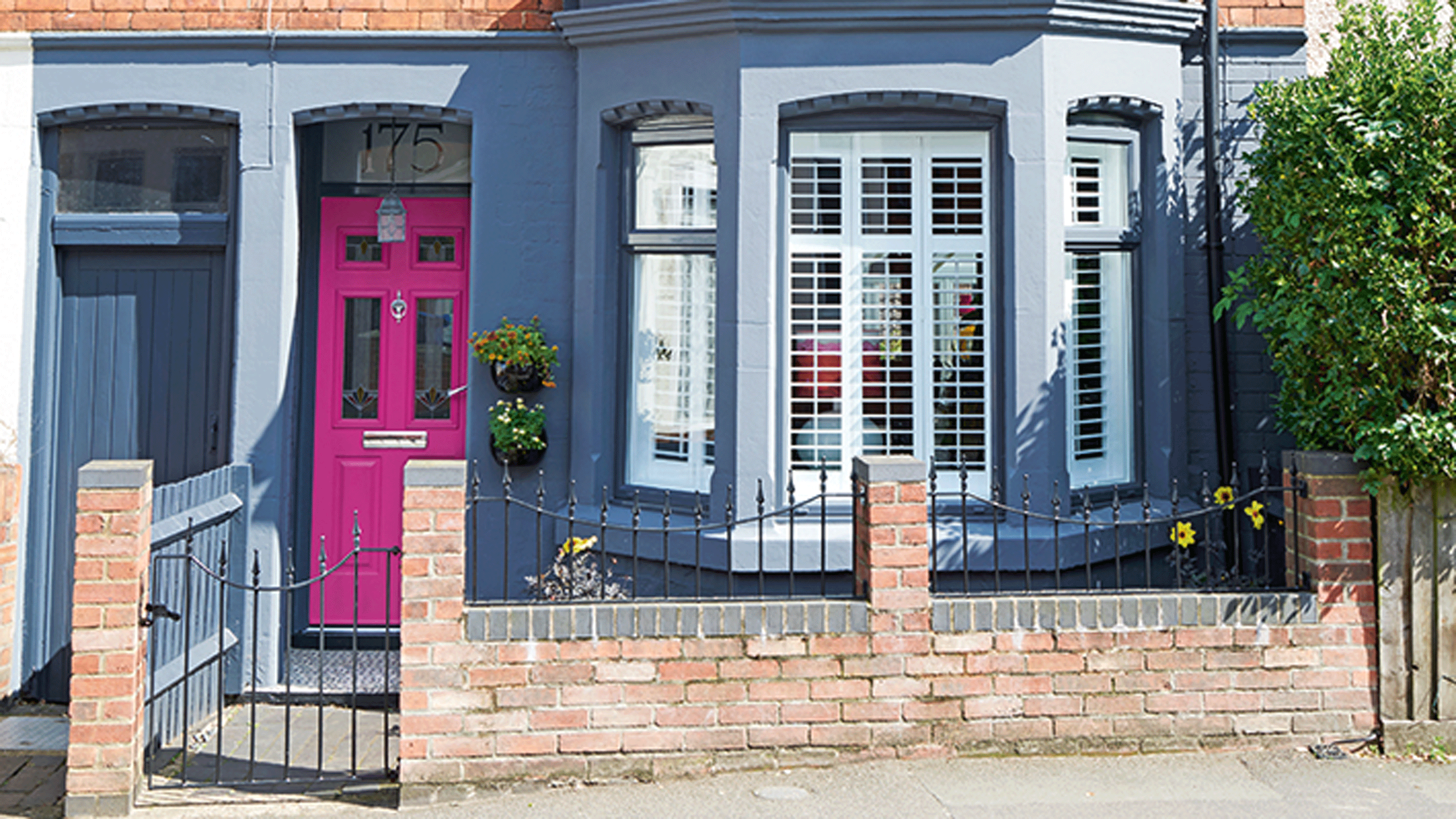
Katie Sims
As the first thing we (and others) see when we enter our homes, our front doors should be a point of pride. So if yours has been looking dated and a little lacklustre recently, learning how to paint a front door is a great easy DIY project to add to your list.
And the best part is, you can learn how to paint a front door without removing it, making this job as hassle-free as possible. All you need to do is decide on the best colour to paint your front door, grab your paintbrush and a few other supplies, and start painting once the sun is shining.
'Now is the perfect time to upgrade your outside area and your front door is a great place to start,' says Pam Gruhn, Founder, Frenchic Paint. 'It can give your home such a ‘lift’ and is of course much cheaper than buying a new front door!'
And knowing you can learn how to paint a front door without having to remove it first means there's no excuse not to freshen up your door in time for summer. We've asked the experts to share all their tips on how to get the job done, whether your door is made from PVC, UVC, wood or composite material.
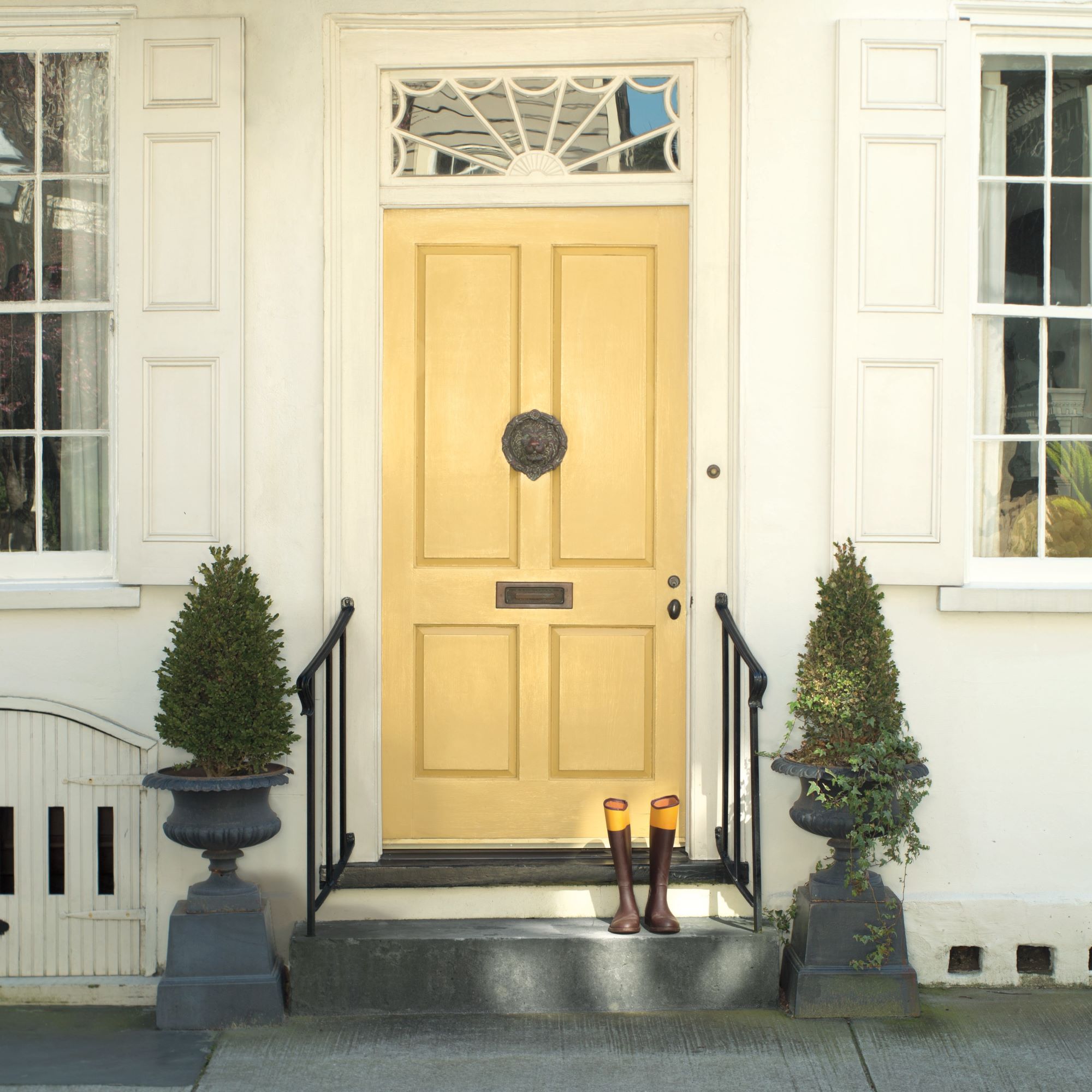
How to paint a front door without removing it
Follow the steps in our essential guide to learn how to paint a front door so you end up with a seamless application that will last for years to come. First, we asked the experts to clarify whether or not it is to possible to paint a front door without removing it.
Can you paint a front door without removing it?
'It is entirely possible to paint a front door without removing it,' say the interior design specialists at CGC Interiors. 'The only real issue you may face is bad weather. If it begins to rain while the paint is still wet, it will get washed away.'
So that you don't run into this issue when painting your front door, wait for a bright sunny spell before you make a start. That way you don't have to take the door off its hinges and paint it inside, which instantly makes the job feel more daunting.
What you'll need
- Flat scraper
- Filling knife
- Sandpaper
- Exterior multipurpose filler
- Paint brushes
- Painter's tape
- Exterior paint
- 40mm or 50mm brush
Step-by-step
1. Check the weather forecast
'For any exterior painting jobs, you need a dry day of at least 10 degrees or above to ensure that the paint can properly dry', says Olivia Hunter, DIY Specialist, Wallpaper It. 'However, hot weather can be similarly problematic, causing the paint to dry too quickly. Springtime offers the most opportune temperatures, so look to add this job to your DIY tasklist for May or June.'
Though now is the ideal time to learn how to paint a front door without removing it, a rainy day could be just around the corner, so check the forecast and give yourself at least 2 days without rain to get the job done.
2. Test out your chosen colour
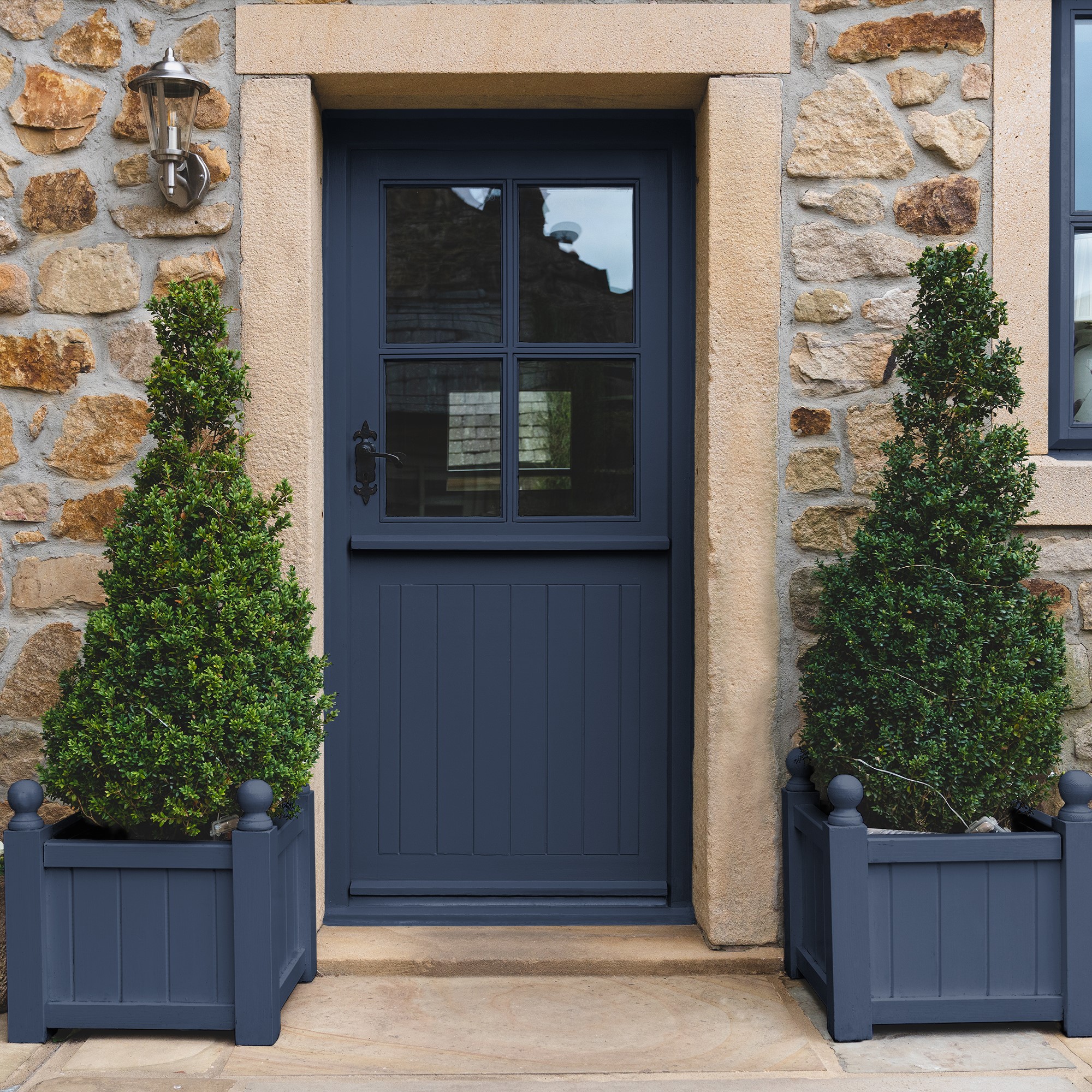
Before you commit to repainting your door, make sure you're happy with the shade you've chosen and that it matches with your front door ideas vision. The best way to visualise a colour and test it out is to paint it onto a piece of lining paper or the back of old wallpaper. This will allow you to hold it up against the exterior walls and existing door colour to see the contrast.
Frenchic Al Fresco Paint, £17.95 at Frenchic
Choose from 27 beautiful colours for your front door with Frenchic's Al Fresco paint. It works on any material, and is designed to be weatherproof and durable.
3. Remove any hardware
Unscrew any handles, letterboxes, etc, before sanding and prepping the door's surface, as you don't want to scratch any hardware. Alternatively, you can use painter's tape, like this Frog Tape Multi Surface Tape, £6.99 at Amazon, to protect your handle and letterbox without removing them.
4. Prepare the surface
Before applying a fresh lick of paint to your front door, you need to remove any old and flaky paint first. 'Not only will this help your exterior paint go on more smoothly, but it will also texturise the surface of the door, which allows the new coat of paint to hold faster,' Olivia explains.
Use a flat scraper to dislodge the old paint. With wooden doors use an exterior multipurpose filler to fill any cracks or holes on the door’s surface. Once dry, sand the whole surface of the door with medium-grade sandpaper, then repeat with fine sandpaper.
5. Give the door a good clean
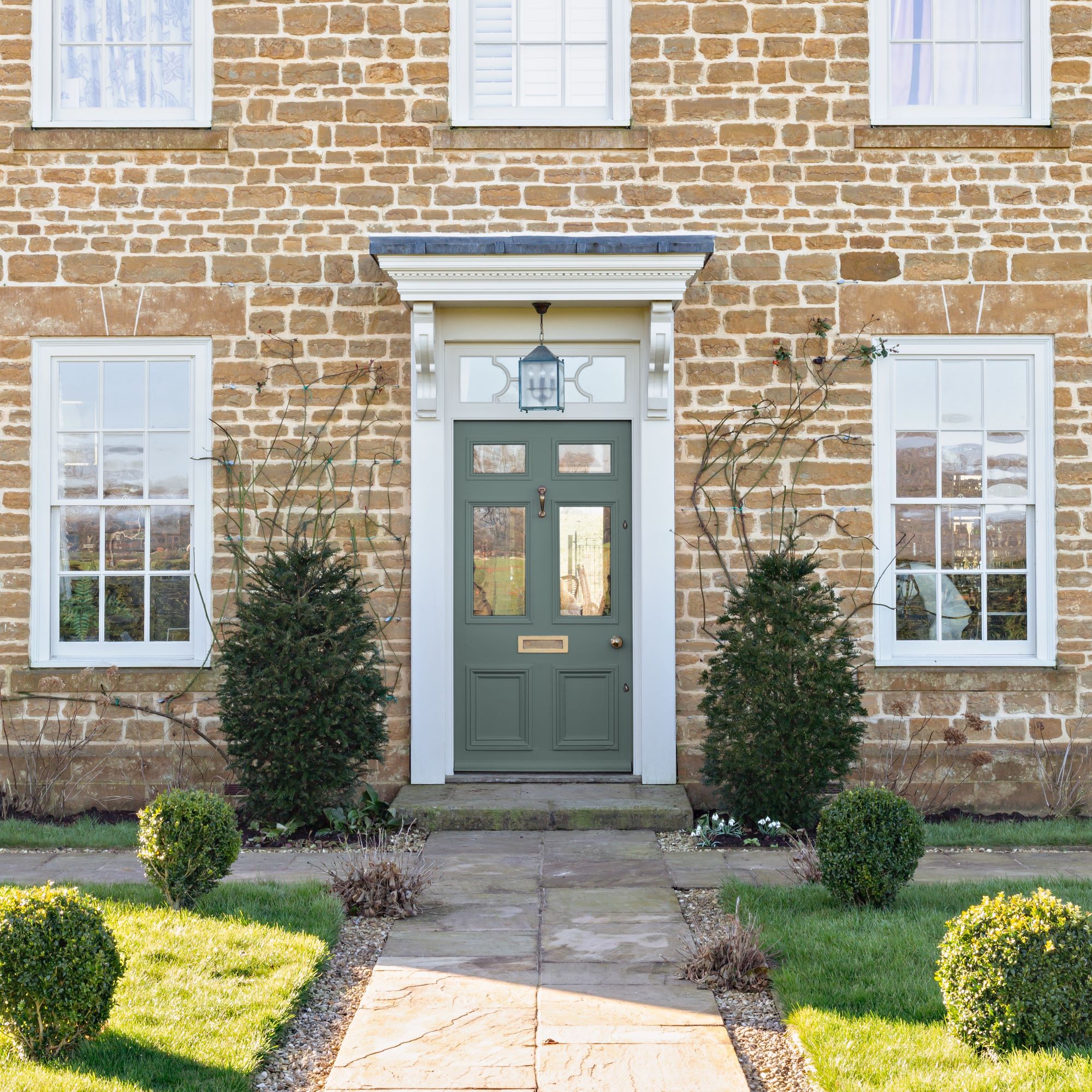
Make sure you clean down the door to remove any dirt and dust before you apply any paint, because these will stick to the paint and dry to the door – causing an uneven surface. To give the door a good all-over wash sugar soap solution is best for the job. You can buy this at all good DIY retailers.
6. Paint the door
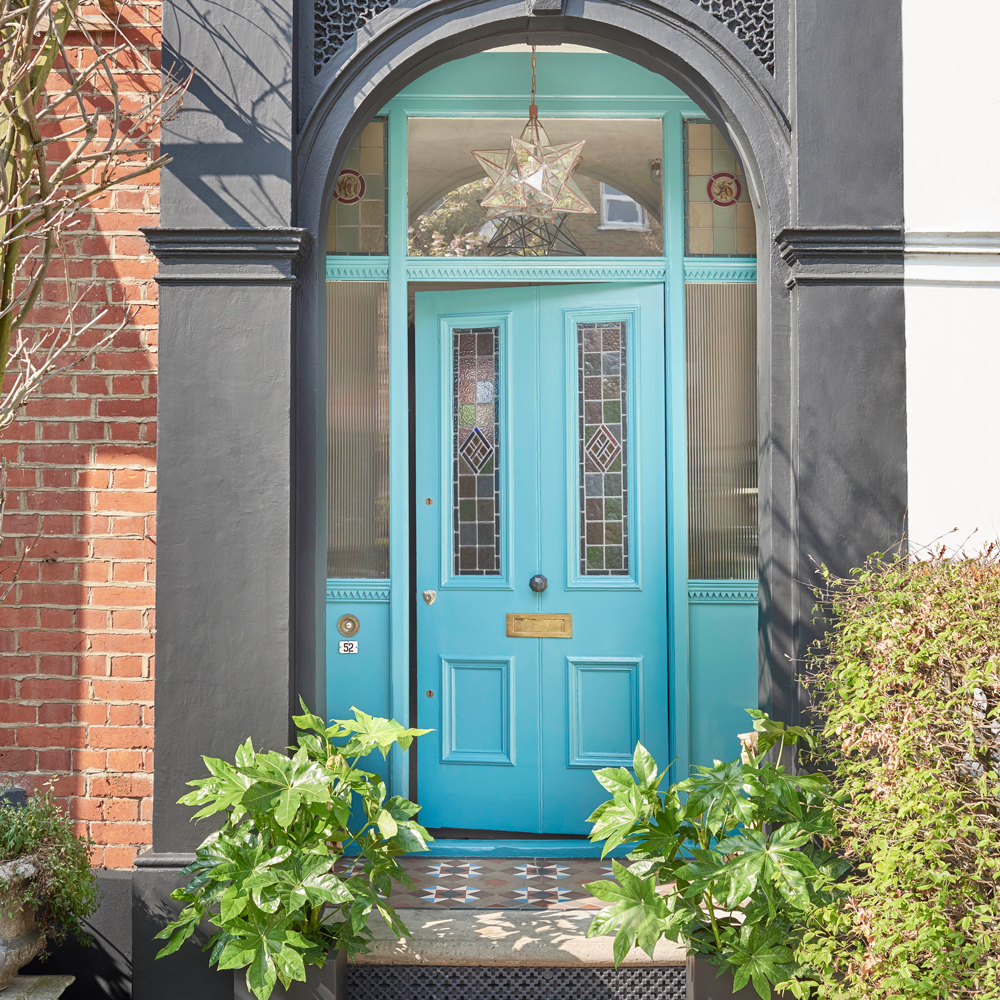
Paint the first coat, focussing on any raised door panels first, and then paint the rest of the door. If you are using Frenchic paint, leave for two hours then paint the second coat.
'Be careful with the door for 2-3 weeks for obvious reasons,' says Pam from Frenchic. 'But you won't need varnish or sealant.'
7. Remove tape or reattach fixtures
If you taped your door hardware make sure to remove this while the paint is still wet. Or, if you removed the fixtures then screw these back on when your door has fully dried. You can learn how to fit a door handle easily, so it shouldn't be a long job.
And that's it! You've successfully learnt how to paint a front door without removing it, and you can tick this DIY job off your to do list.
FAQs
Do I need to remove old paint before painting front door?
To learn how to paint a front door properly, removing the old paint first is an essential step. Painting over old paint will not give you the best results, and you'll end up with a rough, uneven finish.
'Removing the old paint will help the paint stick better and will give it a smoother overall look,' say the experts at CGC Interiors. If the existing layers of paint have cracks, bubbles or have begun to peel then painting right over them will only enhance these defects. Painting over old paint can actually make your door look worse and ruin your vision of the space.'
Do I need to sand front door before painting?
Sanding the front door before painting it is another step the experts recommend for a seamless finish.
'This adds texture which allows the paint to grip onto the surface and last as long as possible,' explains Anna Elkington, Interior Design Expert, Melody Maison. 'Without sanding, the paint may not adhere whatsoever which can be a waste of time and resources. In addition, sanding is crucial for removing uneven textures so it is important if you want to achieve a professional and smooth finish.'
Anna recommends using sandpaper and a sand block to sand down your door, then using a damp cloth to remove any dust or dirt before you begin painting.
What's the best paint for a front door?
'To create a striking front door with a colour that lasts, you'll need an exterior paint that has a UV-resistant formula and provides protection against cracking, flaking and peeling,' recommends Sue Kim, Senior Colour Designer, Valspar.
As we've mentioned previously the Frenchic Al Fresco range works on all materials; PVC, UVC, wooden and composite exterior doors, with no need for a primer. We also love Little Greene's Intelligent exterior eggshell, Dulux Weathershield Quick Dry Exterior Paint and Benjamin Moore's Grand Entrance gloss to do the job.
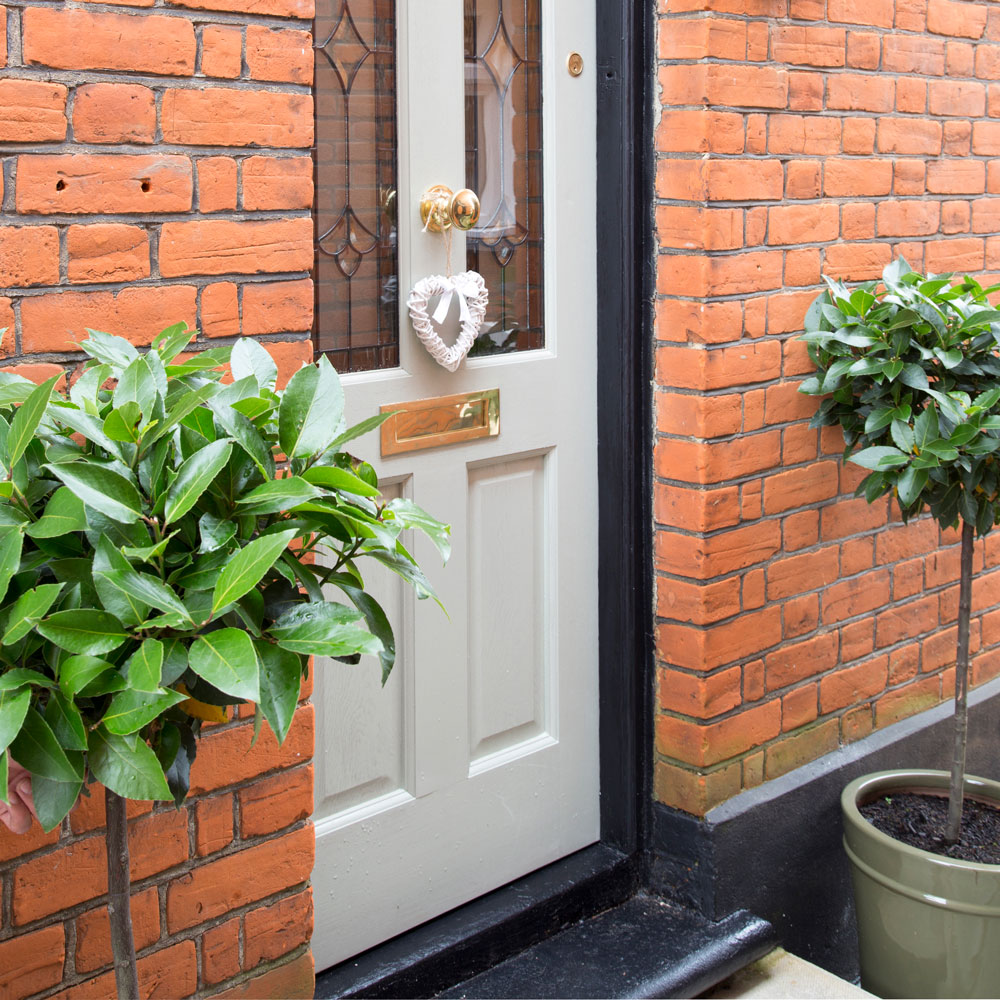
What colour should I paint my front door?
The most popular colours for front doors are in the neutral white and brown palettes, however, some bolder hues are not that far behind. 'Teal Façade, Indigo Shade, Feather Flock, Green Glade and Lavender Quartz, have all had growing popularity as a way to add some drama and personal touch to the exterior of a home,' say the team at Dulux.
'Our most popular colours at the moment for doors are greys such as Smudge, Stormy, Greyhound, and cream shades such as Cream Dream or Cool Beans. Bright pastel shades are becoming more and more popular such as Parma Violet, Dusky Blush and Wise Old Sage,' says Pam at Frenchic.
If you're not sure where to start...
- Choose a shade that complements the other tones and materials present on your home's exterior. If you've got other painted items such as shutters or postboxes, it's a good idea to coordinate with those.
- Colours tend to fade outside, so the bolder the better when it comes to exterior paint. Test samples in different lights to see how they change throughout the day.
- Take the style of your door into account. Before rushing into anything, step back and take a proper look at your door, along with the accessories and trim that frame it. Adding a stately shade can make a simple cottage-style door look more sophisticated, while a casual hue can give a formal façade a friendlier feel.
Will you be painting your front door using this handy guide?
Get the Ideal Home Newsletter
Sign up to our newsletter for style and decor inspiration, house makeovers, project advice and more.
Jennifer is the Deputy Editor (Digital) for Homes & Gardens online. Prior to her current position, she completed various short courses a KLC Design School, and wrote across sister brands Ideal Home, LivingEtc, 25 Beautiful Homes, Country Homes & Interiors, and Style at Home.
- Katie SimsContributor
-
 Shoppers can’t get enough of The Range’s lemon tree, but I’ve found an even cheaper bestseller at B&Q - it’s perfect for a Mediterranean look
Shoppers can’t get enough of The Range’s lemon tree, but I’ve found an even cheaper bestseller at B&Q - it’s perfect for a Mediterranean lookWelcome the summer with this glorious fruit tree
By Kezia Reynolds
-
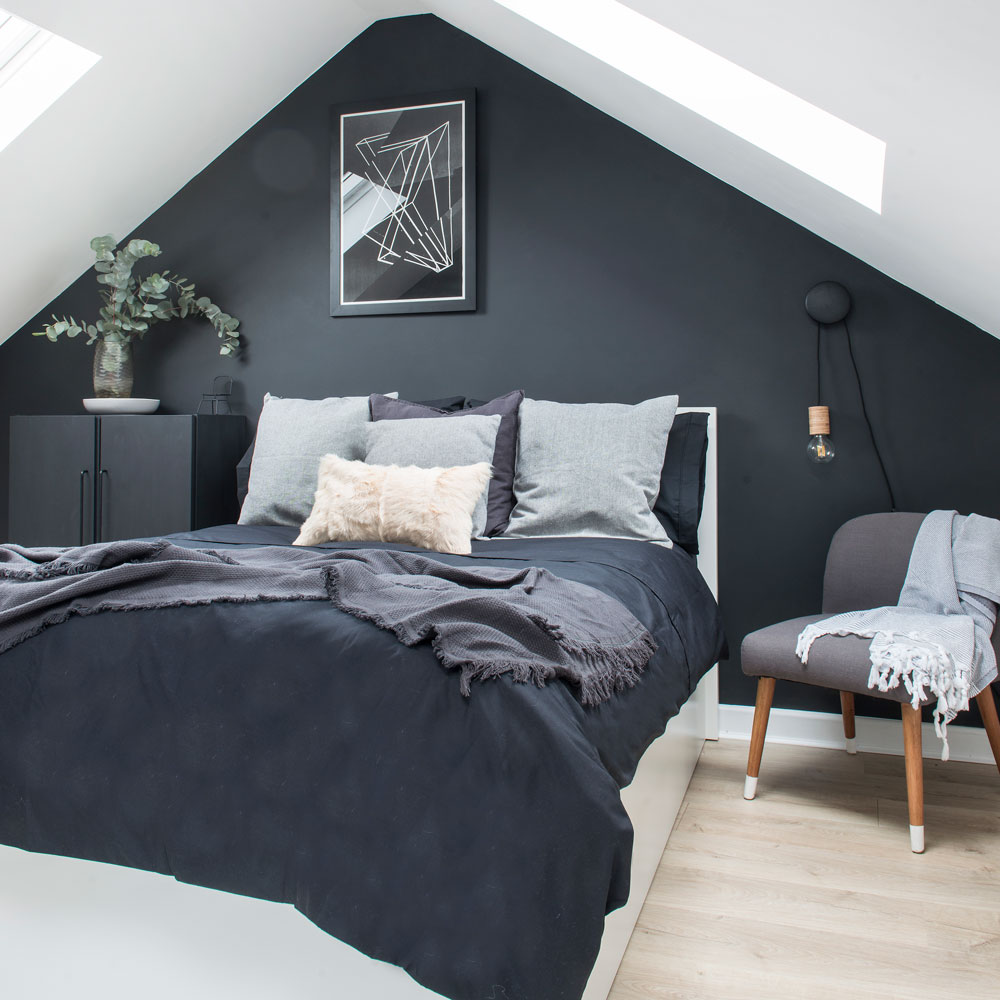 What colours make a small bedroom look more expensive? 7 shades, recommended by the experts
What colours make a small bedroom look more expensive? 7 shades, recommended by the expertsGive your bijou bedroom a luxury look with one of these transformational shades
By Holly Walsh
-
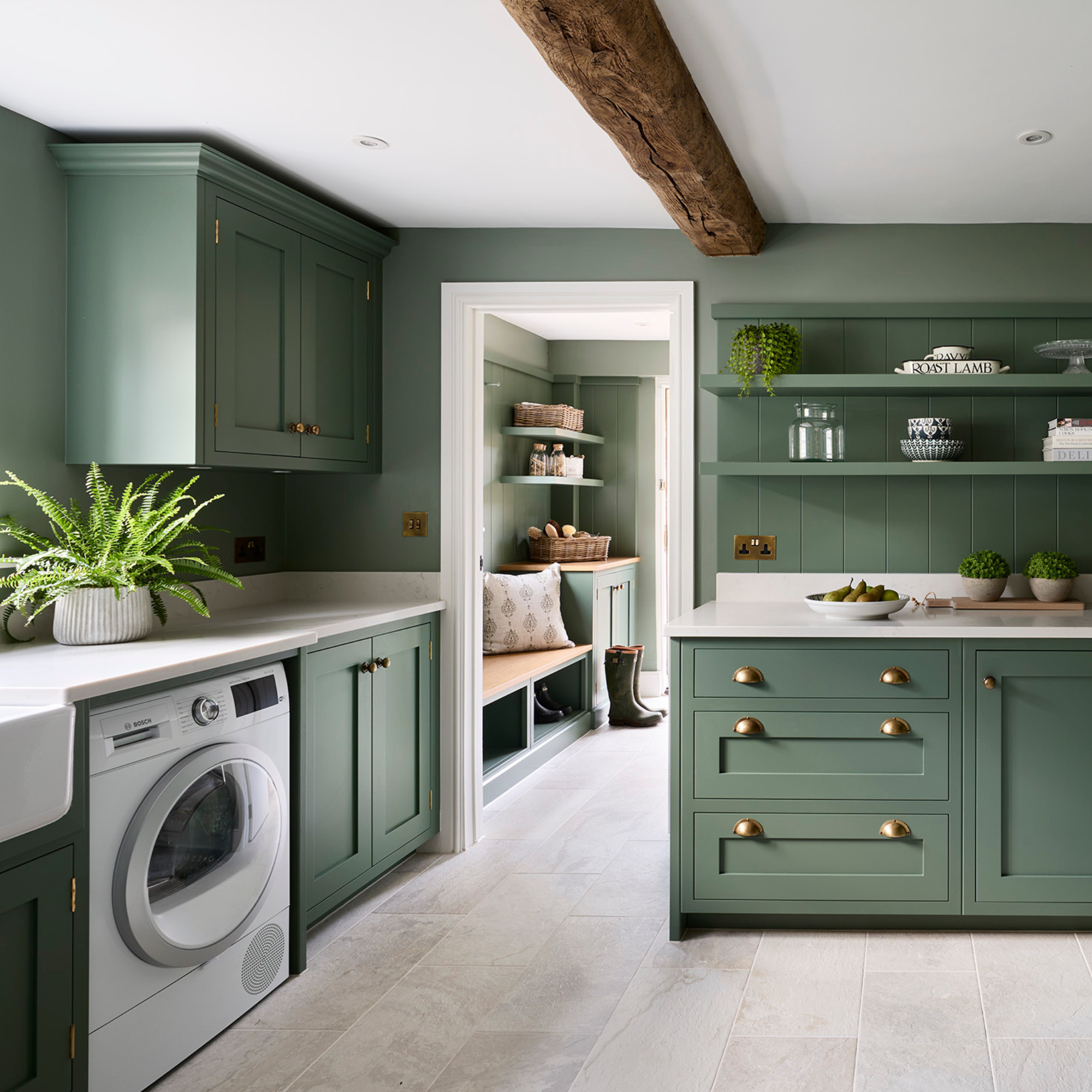 5 reasons to use Farrow & Ball 'Green Smoke' in a kitchen – the earthy tone that's on trend for 2025
5 reasons to use Farrow & Ball 'Green Smoke' in a kitchen – the earthy tone that's on trend for 2025Could this be the perfect shade for your kitchen?
By Holly Walsh
